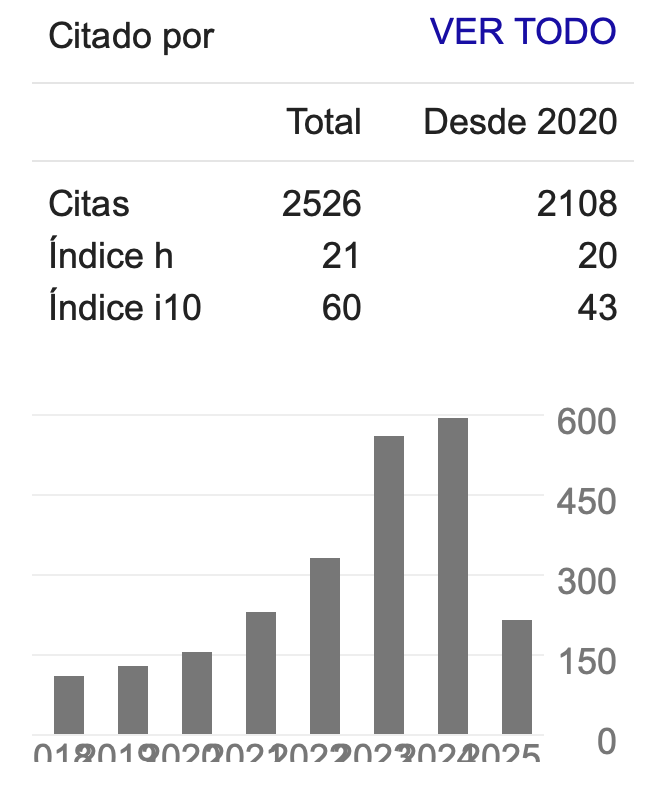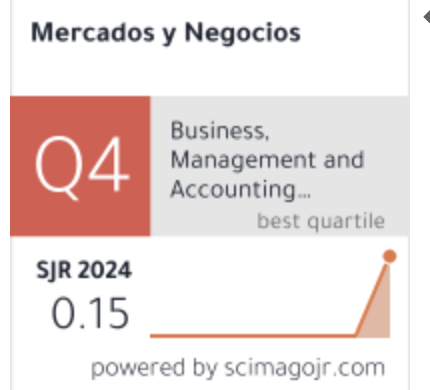Comportamiento y bienestar financiero como factores competitivos en el personal académico de una institución de Educación Superior
DOI:
https://doi.org/10.32870/myn.v0i30.5275Abstract
Los problemas de salud y de finanzas personales afectan a gran diversidad de hogares. La falta de un comportamiento adecuado en la administración de las finanzas produce, entre otras consecuencias, una gran ansiedad o estrés. El aumento de estrés y la ansiedad van de la mano cuando no se tiene control del dinero, haciendo de esta forma que no se alcance el bienestar financiero (Tyson, 2006). Este trabajo, a través de un estudio cuantitativo, tiene como objetivo establecer la relación entre el comportamiento financiero y el bienestar financiero. Los resultados se obtuvieron a través de una encuesta aplicada en el mes de agosto y septiembre de 2012. El análisis de la información determina que el modelo de regresión lineal explica de manera razonable la relación entre las variables comportamiento financiero y bienestar financieroReferences
Bernéus, H., Sandberg, C., & Wahlbeck, D. (2008). Behavioral Finance Investors Rationality (Doctoral dissertation, Tesis de licenciatura no publicada. Jönköping University. Jönköping International Business School, Suecia. http://umu. diva-portal. org/smash/record. jsf).
Buckland, J. (2010). Are low-income Canadians financially literate? Placing financial literacy in the context of personal and structural constraints. Adult Education Quarterly, 60(4), 357-376.
León, B. (2006). Aptitud financiera y bienestar financiero de los empleados de la Universidad de Montemorelos (Doctoral dissertation, Tesis de maestría. Universidad de Montemorelos. Facultad de Ciencias Administrativas Nuevo León, México).
Mandell, L., & Klein, L. S. (2009). The impact of financial literacy education on subsequent financial behavior. Journal of Financial Counseling and Planning,20(1).
Matzek, A. E., & Stum, M. S. (2010). Are Consumers Vulnerable to Low Knowledge of Long‐Term Care?. Family and Consumer Sciences Research Journal, 38(4), 420-434.
O'Neill, B., Sorhaindo, B., Xiao, J. J., & Garman, E. T. (2005). Financially distressed consumers: Their financial practices, financial well-being, and health. Journal of Financial Counseling and Planning, 16(1).
O’Neill, B., & Xiao, J. J. (2003). Financial fitness quiz: A tool for analyzing financial behavior. Consumer Interests Annual, 49, 1-3.
Porter, N. M. (1990). Testing a model of financial well-being.
Prawitz, A. D., Garman, E. T., Sorhaindo, B., O'Neill, B., Kim, J., & Drentea, P. (2006). InCharge financial distress/financial well-being scale: Development, administration, and score interpretation. Journal of Financial Counseling and Planning, 17(1).
Prawitz, A. D., Shatwell, P., Haynes, G., Hanson, K. C., Hanson, W. W., O’Neill, B., & Garman, E. T. (2007). Lifestyle risk factors, health status, and financial distress: Framing interventions using the Transtheoretical Model of Change. In Proceedings of the Association for Financial Counseling and Planning Education (Vol. 25, pp. 153-161).
Rutherford, L., & DeVaney, S. A. (2009). Utilizing the theory of planned behavior to understand convenience use of credit cards. Journal of Financial Counseling and Planning, 20(2).
Strumpel, B., Morgan, J. N., Zahn, E., & Pérez, L. F. (1979). La conducta humana en las relaciones económicas. Trillas.
Velshi, A., & Romans, C. (2012). How to Speak Money.
Xiao, J. J., Collins, M., Ford, M., Keller, P., Kim, J., & Robles, B. (2010). A review of financial behavior research: Implications for financial education. National Endowment for Financial Education Quarter Century Project, http://www. nefe. org/Portals/0/WhatWeProvide/PrimaryResearch/PDF/TheQtrCenturyProject_Theme 2_FinancialBehaviorsandMotivators. pdf.
Published
How to Cite
Issue
Section
License
Mercados y Negocios by Department of Mercadotecnia y Negocios Internacionales. University of Guadalajara is licensed under a License Creative Commons Attribution-NonCommercial 4.0 International.
The author retains the copyright.








